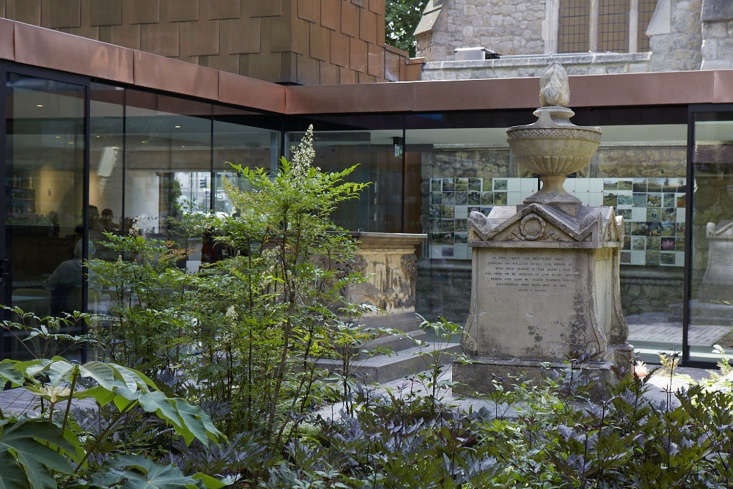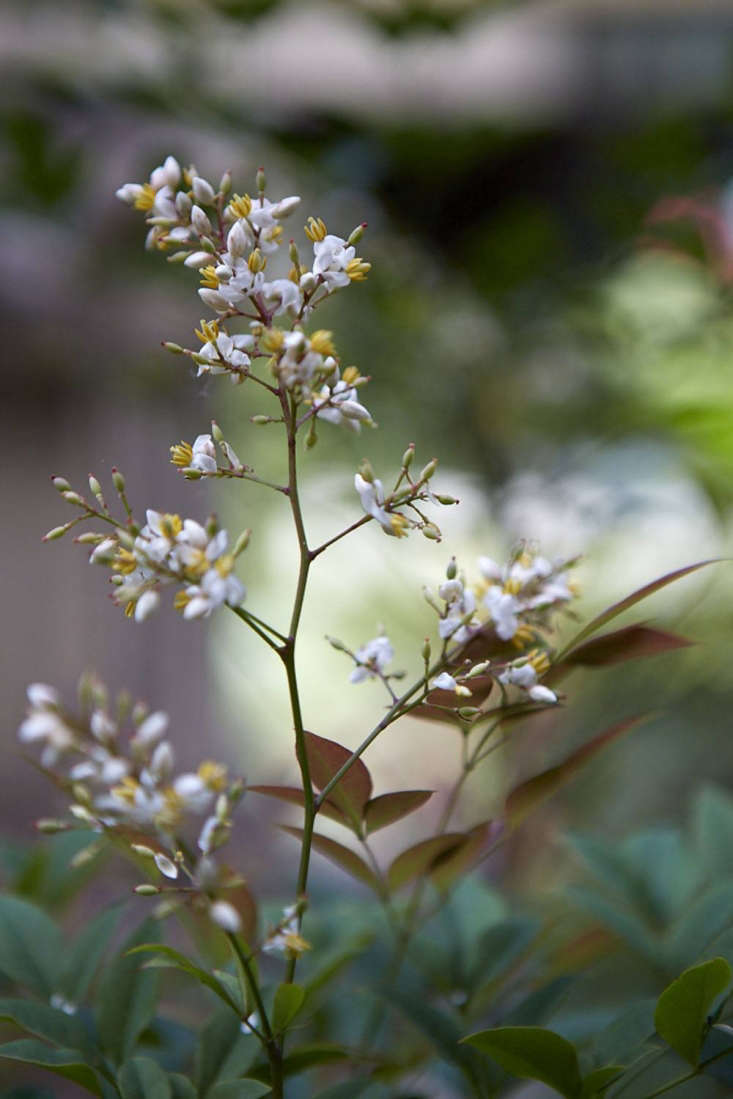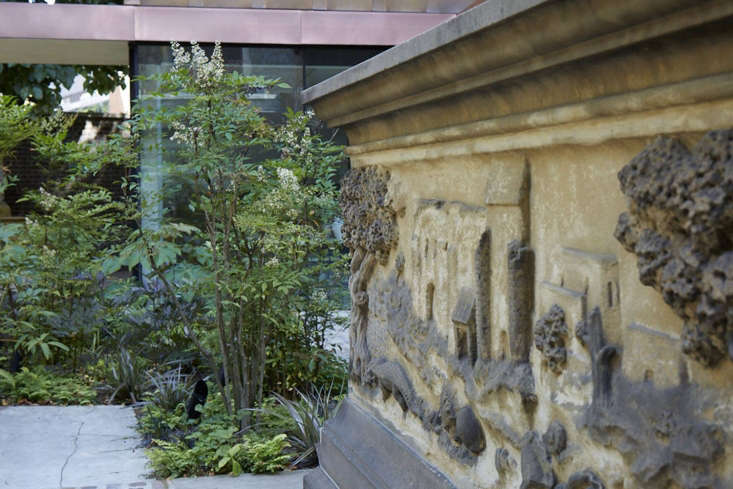There is a new hiding place in London, across the river from Westminster: near and yet very, very far. The Garden Museum, in a converted church next to Lambeth Palace, is dedicated to the design and culture of gardening. After a comprehensive remodel, all is smooth and linear, yet still slightly eccentric. And the museum’s garden? In the middle is a pocket Eden, courtesy of designer Dan Pearson.
Christopher Woodward, the charismatic director of the Garden Museum, describes the effect most succinctly: “The museum should be a part of the city when you want to be a part of the city, and an escape when you want to escape.” Let’s find it:
Photography by Britt Willoughby Dyer.

The former churchyard that is now part of the Garden Museum is the final resting place of several important plant hunters: the John Tradescants, senior and junior, and Captain Bligh of Mutiny on the Bounty fame. Both tombs bear the word “transplanted” and this sets the tone for the small enclosed garden in the London district of Lambeth.
“The main idea behind the plant choices was to create a garden of treasures from all over the world,” explains Huw Morgan of Dan Pearson Studio, “some of them familiar as garden plants, others unusual, strange and intriguing. It’s a cabinet of horticultural curiosities.”


The cloister garden, or Sackler Garden as it is more properly called, is surrounded by glass on all sides like a giant “Wardian case” a glass box devised in the 19th century for transporting and raising unknown plants from the New World. It is also possible to see the garden from the street, and from the café which is a destination in itself.


John Tradescant Sr. was a gardener to King Charles I and moved to Lambeth in the 1620s. His local parish church was St Mary’s, now the Garden Museum. He and his son began to make a garden of botanical specimens, consulting the botanist John Parkinson, a fellow Londoner. Parkinson wrote the first English book on gardening in which plants were grown for their beauty alone. Paradisi in Sole, Paradisus Terrestris (“Park-in-Sun’s Terrestrial Paradise”) imagined a contemporary Eden based on the supposed original: all the plants of the world, collected in one place.

“In his brief to the studio,” says Huw Morgan, “Christopher described how the 17th century was haunted by the idea of Eden.”
Christopher Woodward, the museum director, takes over: “Tradescant lived at a time when it had become accepted that Eden could not be pinned down on the map, but it was believed that all the plants that once grew in Eden, and had become dispersed, could be re-united.”

“A walled garden could be an Eden,” continues Christopher. “Beyond was the ‘rude waste’, the fallen world.”


Gravestones make wonderful hard landscaping, especially when laid at odd angles and set into polished concrete. The gravestones on site were not allowed to be moved, yet the effect is the opposite of gloomy. Alun Jones of Dow Jones Architects notes: “When you’re in our building there’s a very clear sense that the tombstones are drifting through the garden and they carry on drifting through our building.”

N.B.: See more of our favorite garden refuges in London:
- A Secret Garden in the Middle of Regent’s Park in London.
- A Secret Courtyard Garden in Piccadilly, Ancient Tree Ferns Included.
- Secret London: The Bees of Buckingham Palace.












Have a Question or Comment About This Post?
Join the conversation (0)